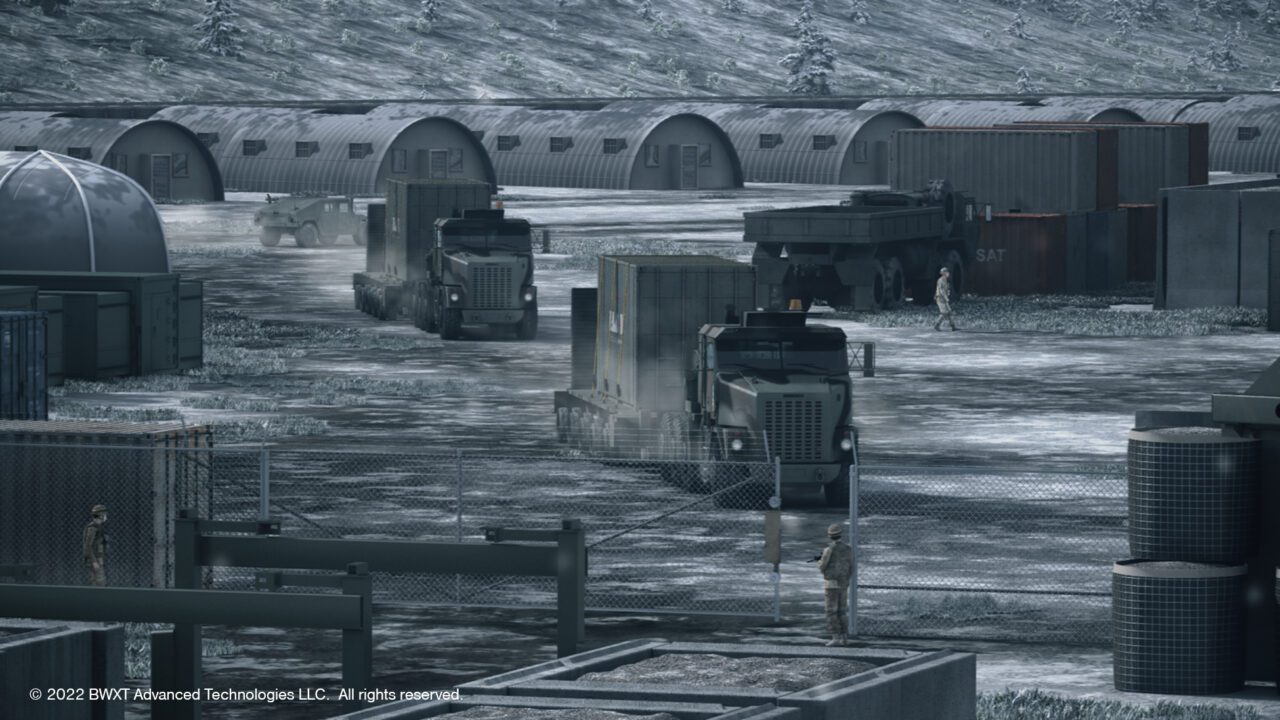
The Department of Defense (DOD) has picked BWX Technologies’ (BWXT’s) microreactor design for its “Project Pele” full-scale transportable prototype. The selection closes out a much-watched contest with X-energy for the contract from the DOD’s Strategic Capabilities Office (SCO) to build and operate what could be the nation’s first advanced microreactor.
Lynchburg, Virginia-based BWXT will now manufacture and deliver the prototype microreactor to Idaho National Laboratory (INL) for testing by 2024. “The prototype will be built under a cost-type contract valued at approximately $ 300 million, depending on options selected, by BWXT Advanced Technologies LLC in facilities in Lynchburg, Virginia, and Euclid, Ohio,” the company said on June 9. “Over the next two years, BWXT expects that approximately 120 employees will work on the project, including roughly 40 skilled trades, engineers and other positions that will be hired to support this effort and other projects.”

Project Pele will comprise a high-temperature gas-cooled (HTGR) mobile microreactor that will be capable of producing 1 MWe to 5 MWe. BWXT’s selected Project Pele HTGR design, however, must achieve a few slated technical objectives, which appear carefully tailored to defense-related applications and timeframes. Project Pele stems from the 2019 National Defense Authorization Act, in which Congress directed the DOD and the DOE to develop a plan to design, build, and test a microreactor at a DOD installation no later than December 2027. Project Pele is a part of the DOD’s effort to establish resilient alternative power sources for a variety of operational needs, which have historically relied on fossil fuel deliveries.
Compact, Transportable, and Safe
BWXT on Thursday confirmed its design meets the DOD’s specifications. Its transportable design “consists of multiple modules that contain the microreactor’s components in 20-foot long, ISO-compliant CONEX shipping containers,” it said. In addition, the reactor is designed to be safely and rapidly moved by road, rail, sea, or air.
“The entire reactor system is designed to be assembled on-site and operational within 72 hours. Shut down, cool down, disconnection and removal for transport is designed to occur in less than seven days,” it said. BWXT’s transportable reactor core and associated control system are pivotally designed to maintain safety “under all conditions, including transitional conditions throughout transport,” it said.
Reactor fuel for the Project Pele demonstration is meanwhile slated to be produced from Department of Energy (DOE) stockpiles of highly enriched uranium (HEU) currently stored at the Y–12 National Security Complex in Oak Ridge, Tennessee, the ROD says. The fuel will be converted from a metal to an oxide at BWXT’s Nuclear Fuel Services facility in Erwin, Tennessee. It will then be down-blended to high-assay low-enriched uranium (HALEU) and fabricated into tristructural isotropic (TRISO) reactor fuel at the BWXT facility in Lynchburg, Virginia.
On Thursday, BWXT confirmed that the prototype’s fuel “has been tested and verified to temperatures far exceeding the operating conditions of the reactor,” it said.
It also noted that owing to the “non-commercial” nature of the project, testing and operation of this prototype reactor will proceed under the DOE’s authorization by the Department of Energy. The Nuclear Regulatory Commission will participate in the project, however, to provide SCO “with accurate, current information on applicable regulations and licensing processes,” the company said.
Three Years of Testing at INL
Once the reactor and fuel have safely been separately shipped to INL, fueling will occur at the site, the company said. The system will then undergo up to three years of testing at INL “to confirm performance and operability.” The test program should ultimately demonstrate that the reactor can produce reliable off-grid electric power. “Power generated by the reactor will be transferred to load banks that accurately mimic the operational load that a power source would see in actual application. In addition, the system will be disassembled and re-assembled to prove transportability,” the company said.
Project Pele’s final assembly, fuel loading, and demonstration of the operability and mobility (proof-of-concept) will be performed at the INL site using DOE technical expertise and facilities at the Materials and Fuels Complex (MFC) and the Critical Infrastructure Test Range Complex (CITRC). INL will also disassemble and transport the mobile microreactor, and transport it to temporary storage. INL could also potentially conduct mobile microreactor and spent nuclear fuel post-irradiation examination and disposition.
BWXT plans to collaborate with various industry heavyweights to deliver the Project Pele prototype. BWXT said it will serve as the prime contract and integration lead and assume responsibility for reactor module manufacture. Other participating companies include Northrop Grumman, Aerojet Rocketdyne, Rolls-Royce LibertyWorks, and Torch Technologies.
The DOD’s selection of BWXT’s proposed design over X-energy’s Mobile Nuclear Power Plant follows a two-year development period, which included efforts to prepare an environmental impact statement (EIS). The DOD issued its record of decision to proceed with the project on April 15.
“We are on a mission to design, build and test new nuclear technology to protect the environment while providing power, and we are thrilled with this competitively bid award after years of hard work by our design and engineering team,” said Joe Miller, BWXT Advanced Technologies LLC president. “The entire nuclear industry recognizes that advanced reactors are an important step forward to support growing power needs and significant carbon reduction imperatives.”
—Sonal Patel is a POWER senior associate editor (@sonalcpatel, @POWERmagazine).
The post DOD Picks BWXT Design for ‘Project Pele’ Prototype Nuclear Microreactor appeared first on POWER Magazine.